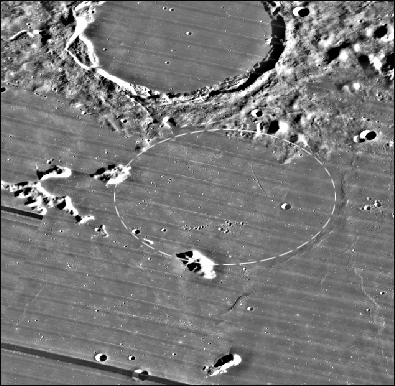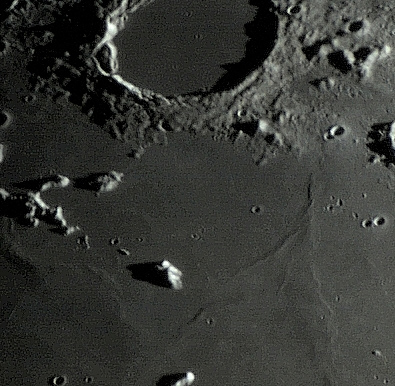Difference between revisions of "Ancient Newton"
(Created page with "<div id="content_view" class="wiki" style="display: block"> =Ancient Newton= ''(informal name)''<br /> {| class="wiki_table" | colspan="2" | Lat: 47.5° N, Long: 8.0°W,...") |
|||
| Line 11: | Line 11: | ||
[http://www.lpod.org/coppermine/displayimage.php?pid=4633&fullsize=1 [[Image:ancientplato-tolentino.jpg|ancientplato-tolentino.jpg]]]<br /> | [http://www.lpod.org/coppermine/displayimage.php?pid=4633&fullsize=1 [[Image:ancientplato-tolentino.jpg|ancientplato-tolentino.jpg]]]<br /> | ||
|} | |} | ||
| − | '''Left:''' ''[http://the-moon. | + | '''Left:''' ''[http://the-moon.us/wiki/file/detail/ancientplato.jpg Annotated]'' [http://www.mapaplanet.org/explorer-bin/explorer.cgi?map=Moon&layers=moon_lo&west=471&south=361&east=816&north=76¢er=-8.16500000000001¢er_lat=0&defaultcenter=on&grid=none&stretch=auto&resamp_method=nearest_neighbor&projection=SIMP&r=1&g=1&b=1&advoption=NO&info=NO&resolution=28.581713462923&lines=397&samples=1309&scale=1.06093&imageTopX=-694382.2049498558&imageTopY=1673625.5589127541&box=yes&x=810&y=354 Lunar Orbiter] view from [http://www.mapaplanet.org Map-A-Planet]. '''Right:''' [http://www.lpod.org/coppermine/displayimage.php?pid=4633&fullsize=1 Ricardo Tolentino's] image from the [http://www.lpod.org/coppermine/ LPOD Photo Gallery].<br /> <div id="toc"> |
=Table of Contents= | =Table of Contents= | ||
<div style="margin-left: 1em">[#Ancient Newton Ancient Newton]</div><div style="margin-left: 2em">[#Ancient Newton-Images Images]</div><div style="margin-left: 2em">[#Ancient Newton-Maps Maps]</div><div style="margin-left: 2em">[#Ancient Newton-Description Description]</div><div style="margin-left: 2em">[#Ancient Newton-Description: Elger Description: Elger]</div><div style="margin-left: 2em">[#Ancient Newton-Additional Information Additional Information]</div><div style="margin-left: 2em">[#Ancient Newton-Nomenclature Nomenclature]</div><div style="margin-left: 2em">[#Ancient Newton-LPOD Articles LPOD Articles]</div><div style="margin-left: 2em">[#Ancient Newton-Bibliography Bibliography]</div></div> | <div style="margin-left: 1em">[#Ancient Newton Ancient Newton]</div><div style="margin-left: 2em">[#Ancient Newton-Images Images]</div><div style="margin-left: 2em">[#Ancient Newton-Maps Maps]</div><div style="margin-left: 2em">[#Ancient Newton-Description Description]</div><div style="margin-left: 2em">[#Ancient Newton-Description: Elger Description: Elger]</div><div style="margin-left: 2em">[#Ancient Newton-Additional Information Additional Information]</div><div style="margin-left: 2em">[#Ancient Newton-Nomenclature Nomenclature]</div><div style="margin-left: 2em">[#Ancient Newton-LPOD Articles LPOD Articles]</div><div style="margin-left: 2em">[#Ancient Newton-Bibliography Bibliography]</div></div> | ||
| Line 23: | Line 23: | ||
''([/IAU%20Directions IAU Directions])''<br /> PLATO.-- ... On the [/Mare%20Imbrium Mare Imbrium] S. of [/Plato Plato] is a large area enclosed by low ridges, to which [/Johann%20Schr%C3%B6ter Schroter] gave the name "'''Newton'''." It suggests the idea that it represents the ruin of a once imposing enclosure, of which the conspicuous mountain [/Mons%20Pico Pico] formed a part.<br /> <br /> MOUNTAIN RINGS.--These objects, usually encircled by a low and broken border, seldom more than a few hundred feet in height, are closely allied to the walled-plains. ... The curious formation on the [/Mare%20Imbrium Mare Imbrium] immediately south of [/Plato Plato] (called "'''Newton'''" by [/Johann%20Schr%C3%B6ter Schroter]), may be placed in this category ... these features have the appearance of having once been formations of a much more prominent and important character, which have suffered destruction, more or less complete, through being partially overwhelmed by the material of the "seas."<br /> <br /> | ''([/IAU%20Directions IAU Directions])''<br /> PLATO.-- ... On the [/Mare%20Imbrium Mare Imbrium] S. of [/Plato Plato] is a large area enclosed by low ridges, to which [/Johann%20Schr%C3%B6ter Schroter] gave the name "'''Newton'''." It suggests the idea that it represents the ruin of a once imposing enclosure, of which the conspicuous mountain [/Mons%20Pico Pico] formed a part.<br /> <br /> MOUNTAIN RINGS.--These objects, usually encircled by a low and broken border, seldom more than a few hundred feet in height, are closely allied to the walled-plains. ... The curious formation on the [/Mare%20Imbrium Mare Imbrium] immediately south of [/Plato Plato] (called "'''Newton'''" by [/Johann%20Schr%C3%B6ter Schroter]), may be placed in this category ... these features have the appearance of having once been formations of a much more prominent and important character, which have suffered destruction, more or less complete, through being partially overwhelmed by the material of the "seas."<br /> <br /> | ||
==Additional Information== | ==Additional Information== | ||
| − | * The location of '''Ancient Newton''' is also depicted on SLC-charts [http://the-moon. | + | * The location of '''Ancient Newton''' is also depicted on SLC-charts [http://the-moon.us/wiki/SLC-D1 D1] and [http://the-moon.us/wiki/SLC-D2 D2]. |
<br /> | <br /> | ||
==Nomenclature== | ==Nomenclature== | ||
Revision as of 20:08, 11 April 2018
Contents
[hide]Ancient Newton
(informal name)
|
Lat: 47.5° N, Long: 8.0°W, Diameter: 115 km, Depth: km, [/R%C3%BCkl%2011 Rükl 11] | |
Table of Contents
Images
LPOD Photo Gallery Lunar Orbiter Images
Maps
([/LAC%20zone LAC zone] 25A2) LAC map Geologic map
Description
Ancient Newton is the informal name for the ghost ring illustrated above, extending from the south rim of [/Plato Plato], on the north, to [/Mons%20Pico Mons Pico], on the south.
Description: Elger
([/IAU%20Directions IAU Directions])
PLATO.-- ... On the [/Mare%20Imbrium Mare Imbrium] S. of [/Plato Plato] is a large area enclosed by low ridges, to which [/Johann%20Schr%C3%B6ter Schroter] gave the name "Newton." It suggests the idea that it represents the ruin of a once imposing enclosure, of which the conspicuous mountain [/Mons%20Pico Pico] formed a part.
MOUNTAIN RINGS.--These objects, usually encircled by a low and broken border, seldom more than a few hundred feet in height, are closely allied to the walled-plains. ... The curious formation on the [/Mare%20Imbrium Mare Imbrium] immediately south of [/Plato Plato] (called "Newton" by [/Johann%20Schr%C3%B6ter Schroter]), may be placed in this category ... these features have the appearance of having once been formations of a much more prominent and important character, which have suffered destruction, more or less complete, through being partially overwhelmed by the material of the "seas."
Additional Information
Nomenclature
- The ghost crater immediately south of [/Plato Plato] was called [/Newton Newton] by [/Johann%20Schr%C3%B6ter Johann Schröter] (see his illustration).
- That name was reassigned to a odd feature near the South Pole by [/Beer%20and%20M%C3%A4dler Beer and Mädler], who referred to the present formation as Schröter's Newton. Schröter's ghost later became known as Ancient Newton (see, for example, [/A%20Portfolio%20of%20Lunar%20Drawings Harold Hill], page 62). I don't know who first called it that. - tychocrater tychocrater Jul 15, 2010
LPOD Articles
Classical Imbrium
Ancient Nothing?
A Classic View (Tom Bash)
A Classic View (Raffaele Barzacchi)
Everything is Here (telescopic High Resolution photograph of the Ancient Newton region, by Christian Viladrich)
Bibliography
- Longshaw, Nigel. 2002. The Lunar Crater Plato: A New Perspective. Current Notes (of the Manchester Astronomical Society)
- Longshaw, Nigel. 2002. More Musings on Plato. Current Notes (of the Manchester Astronomical Society)
This page has been edited 1 times. The last modification was made by - tychocrater tychocrater on Jun 13, 2009 3:24 pm - mfx3

